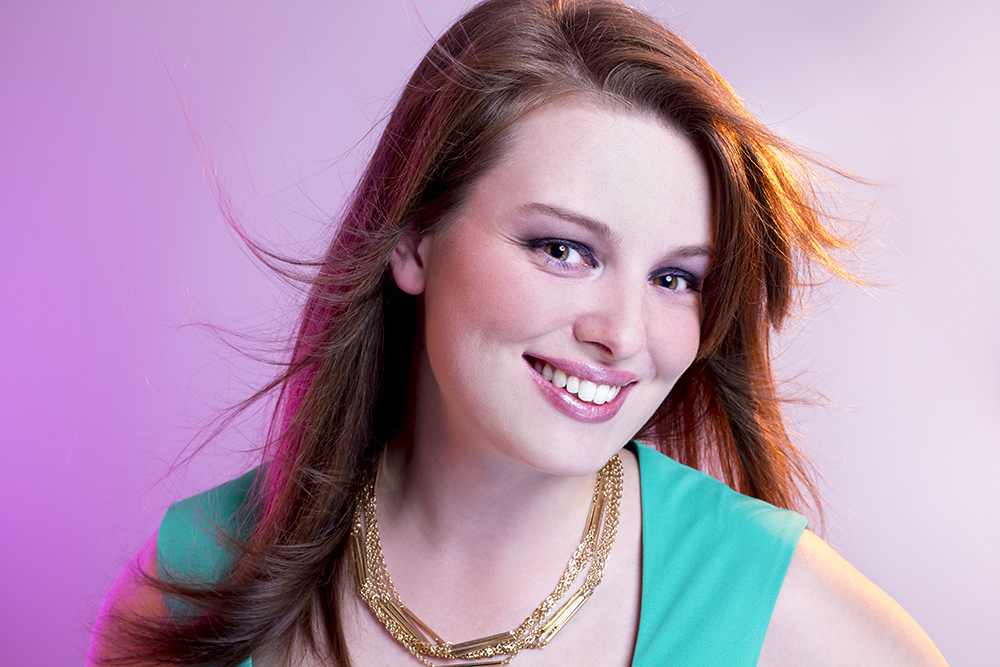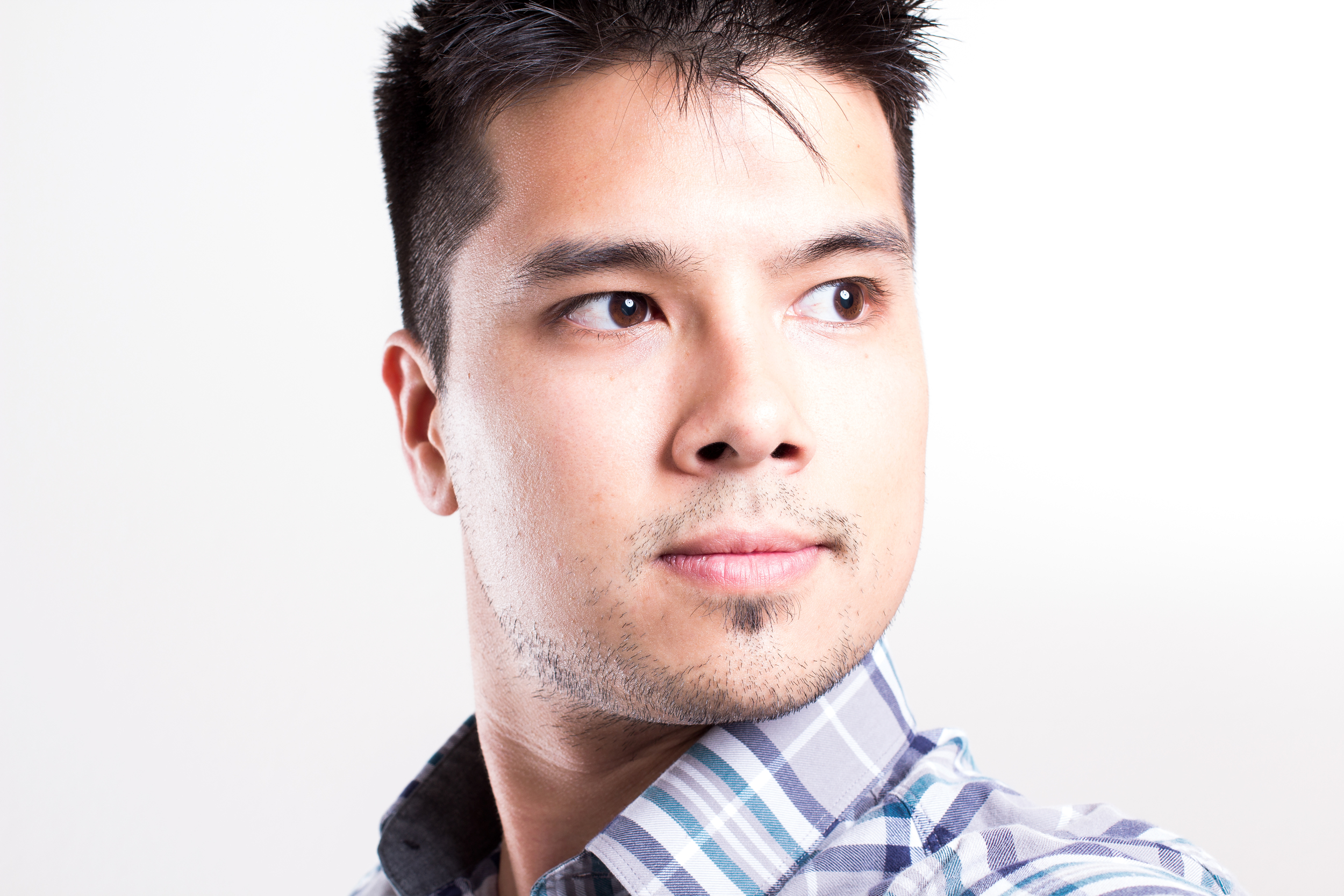One thing that I like to tell photography beginners (and beginners in a lot of things actually) is a well-known but still very true statement: "Keep it simple!" Often beginning photographers will try and buy as much gear and lighting equipment as they can in an attempt to be "more pro." Being a solid photographer is as much about restraint as it is about using lights.
Something to keep in mind when you're assembling a studio is to remember that many of the exact same lighting arrangements can be used to create drastically different end results. For example, I planned to shoot a glamour/fashion headshot in my San Francisco-based studio, which required two rim lights, a fill reflector, and a beauty dish. Because of the look I wanted to achieve, I used mixed colored gels on the two rim lights to cast a nice blend of colors. I placed an orange gel on the right rim light and a purple gel over the strobe inside my octo box camera left.
The beauty dish would be my key light and the reflector would provide a nice fill. The image below was shot at f/6.3 at 1/100 of a second, ISO 100 on a 40mm lens.
Obviously this is a very specific look that, at first glance, you would think would only work in this kind of a situation. But if we make just one adjustment (like removing the gels) we can see how dramatically the image changes:
If you didn't know better, you might think this was different lighting setup, right? I just altered my aperture slightly, stopping down to f/7.1 and adjusting the height and power of the lights to match the new skin toning, but the light positioning and modification remained constant, save for removing the two gels.
My final was intended to be a black and white, with some moderate skin retouching:
I had a conversation a couple weeks ago with an aspiring photographer who was asking me how he could improve his images. He said he didn't want to do what everyone else was doing, and wanted to come up with is own unique lighting setups. I told him that while this was a great goal, not only would it be incredibly difficult to come up with a whole new, totally unique lighting arrangement that nobody had ever tried before, it's also pretty unnecessary. Many photographers use quite similar setups but end up with different results based on how they use those setups.
Don't get caught up in trying to be different in what gear you use or how many lights you have going in your studio. Even something as simple as a one or two light setup can have dramatically different end results just by altering the model's pose, the power of each of the lights, or the environment. Stop thinking about gear and focus on the art. It's not the what, but the how that matters.




